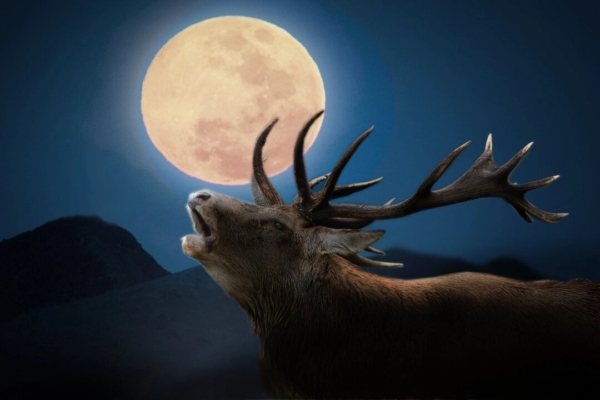In July, the full moon is steeped in the folklore of summer. Ancestors from the colonial period used to say that by July, the corn was already “knee-high,” while Native Americans named the full moons based on seasonal signs, such as the ripening of strawberries, resulting in a variety of moon names. Early explorers recorded a nickname for the full moon in July, which is still used today – we call it the “Buck Moon.”
In a few weeks, the Buck Moon will rise again. Here’s a brief overview.
In 2025, the Buck Moon will rise on July 10 at 4:37 p.m. Eastern Time in the United States. While for viewers in the western hemisphere, the moon will still be below the horizon at that time, when it rises in the southeast at sunset, it will appear very full and bright. If the weather is clear, it will shine throughout the night in the sky.
You’ll need to look towards the lower horizon to spot it. For viewers in the Northern Hemisphere, July is one of the shortest nighttime periods of the year, so the moon’s arc will be relatively low. This trajectory near the horizon causes the moon to appear rust-red due to sunlight passing through a thicker atmosphere. Similar to the pink hues in the sky at sunset, this glow will also reflect on the moon’s surface.
When the moon hangs low in the sky, it may also appear larger than usual, making large objects such as buildings or trees seem small. This phenomenon is known as the “moon illusion.”
Each year, the Buck Moon shifts position between the zodiac signs of Capricorn and Sagittarius (where it usually resides), and next month it will fall into Sagittarius. Astronomers note that in the days leading up to the full moon, it will even eclipse Antares, the brightest star in the Scorpius constellation, located below the “Summer Triangle” star group.
The full moon can easily be observed with the naked eye (without harming your eyes), but using binoculars can help you observe the shadows of craters on the moon’s surface.
If you miss the exact moment of the full moon, don’t worry, because around July 10, it will still appear round.
Regarding the origin of the Buck Moon, biology adds an interesting layer to its name. Starting from late spring each year, male deer undergo hormone secretion triggered by longer daylight hours, causing their antlers to grow at a remarkable rate – about 0.25 inches (6.35 millimeters) per day. By July, the deer’s antlers will have grown to a remarkable size, covered with lots of velvet. By the end of July, the antlers stop growing and begin to harden.
Deer antlers are considered the fastest-growing bone in the world. After the mating season in the fall, they shed their antlers, only to grow them back larger and more impressive the following spring.
The Algonquin tribe in the Northeastern United States is said to have used the name “Buck Moon,” although other tribes may have used it as well. The growing antlers surely leave a lasting impression. However, the names of the monthly lunar cycles in July, much like the colorful summer season, are abundant with various names from Native Americans and colonizers, almost all related to seasonal changes. For example, the Mohawk people call it “Time Of Much Ripening,” the Shawnee people call it “Blackberry Moon,” and Alaskan tribes refer to it as “Salmon Moon.”
However, these folklores are not limited to colonial America. July has traditionally been associated with hay harvesting and mead brewing, so the Anglo-Saxons call it “Hay Moon,” and the Celts refer to it as “Mead Moon.” The Chinese have given it an impressive name – “Hungry Ghost Moon.” In the Southern Hemisphere, July is in the winter season, leading to a completely different set of names such as “Wolf Moon,” “Ice Moon,” and “Old Moon.”
The summer season in the Northern Hemisphere is the time of most abundant growth in nature, with ancient cultural tales reflected in their lunar calendars, including the upcoming July – the Buck Moon.
On July 16, 1969, Apollo 11 was launched from Kennedy Space Center in Florida, sending astronauts to the moon. Four days later, the moon landing was broadcast live on public television, with Neil Armstrong becoming the first person to set foot on the moon.
On July 31, 1999, the ashes of planetary geologist Eugene Shoemaker were placed on the moon.

